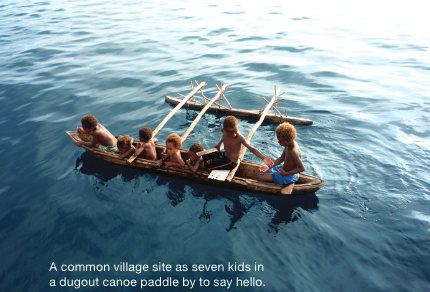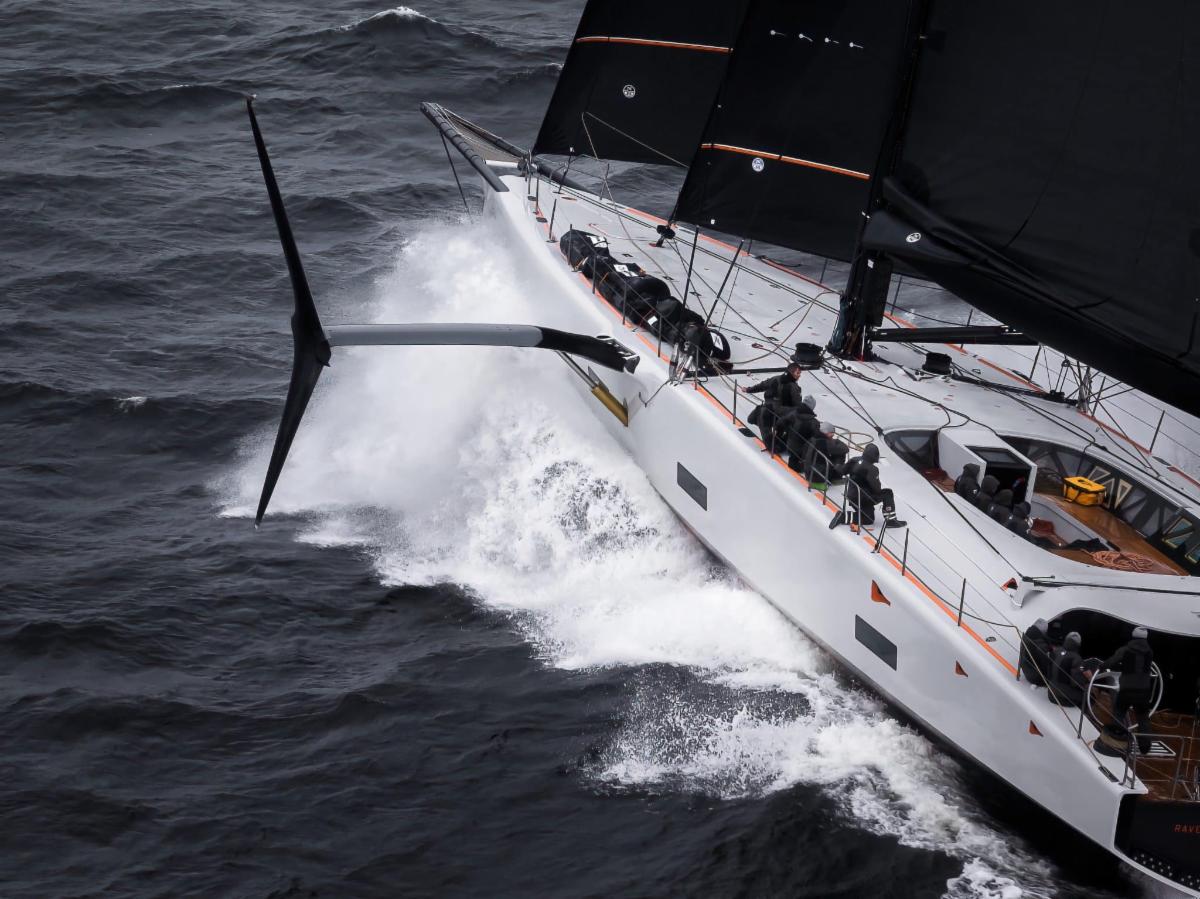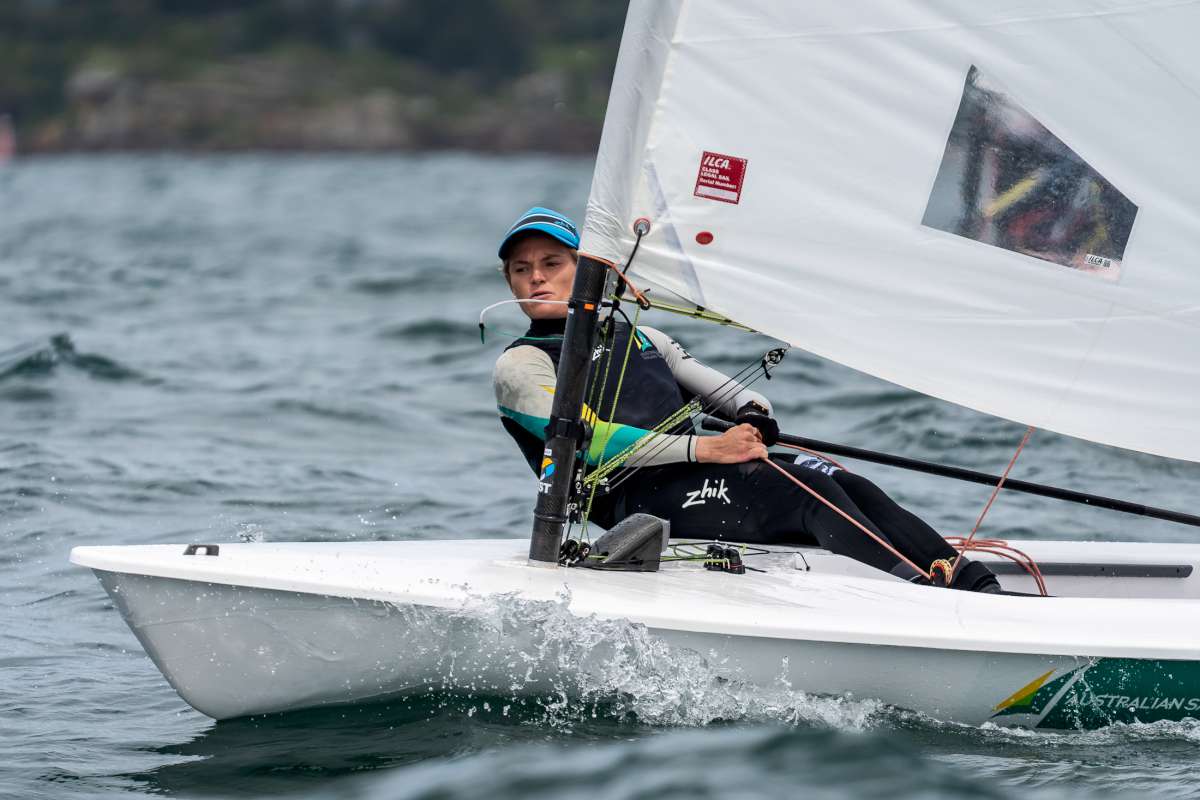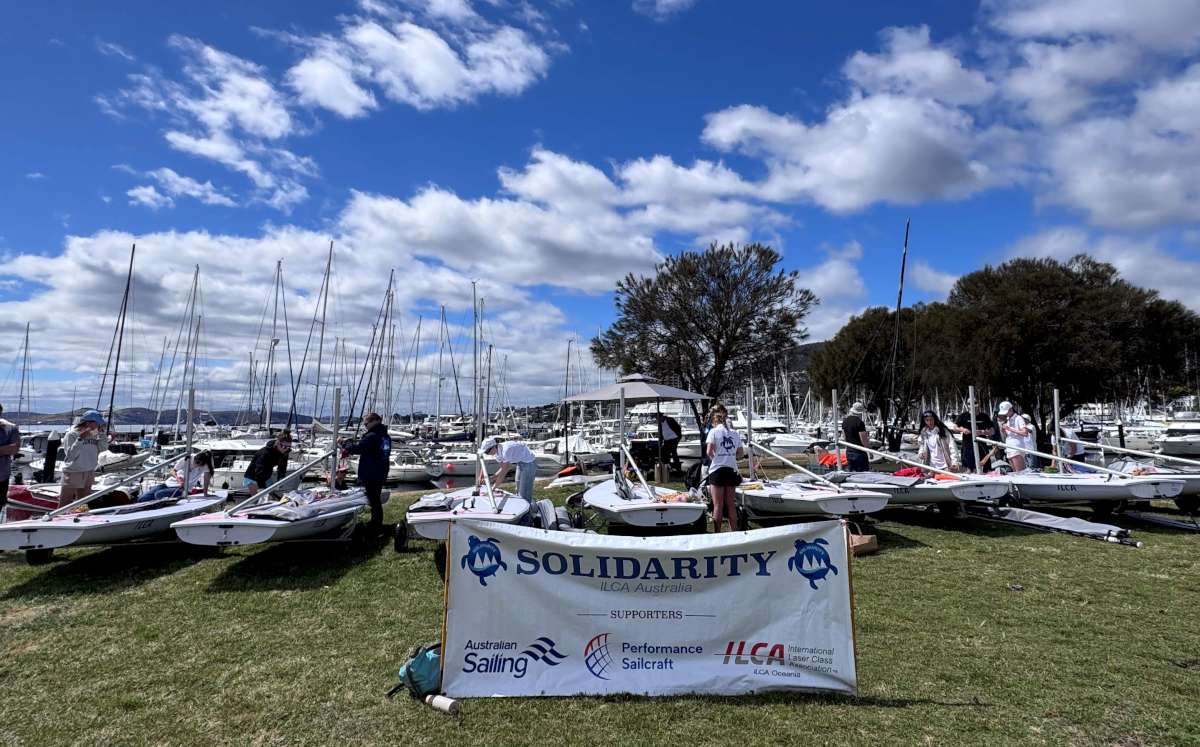A story in Cruising Helmsman in 2004 sparked a visionary dream in Robert Latimer that he has lived to see fulfilled — delivering life-changing eyecare services to the remote islands of Vanuatu by yacht.
But now he needs a new partner if his involvement is to continue. Read on for the full story.
Like most yachties, I’ve read my share of boating mags. But this one was different. It was the November 2004 issue of this magazine and the article that grabbed my attention was about Vanuatu. Specifically, a group using a yacht to transport medical volunteers around the remote islands — doctors, dentists and nurses relieving pain and delivering essential services to those in need. ‘Wow, that’s what I’d like to do,’ I dreamed.
But like most dreams, you eventually wake up, reality intrudes and you move on with your life. This dream though was different. While I knew nothing of Vanuatu at the time, had no boat and lacked any medical background, the dream simply would not go away, so much so, that wherever I turned it seemed the topic of Vanuatu was not far away. The doctors I met would turn out to be regular volunteers to Vanuatu, the yachty who’d just sailed in had been there, Vanuatu was featured in further articles, friends holidayed there. It seemed relentless.
Then after years of tyre-kicking, in 2006 my brother and I finally bought the boat of our dreams — Chimere, a very solid 53ft steel cutter of about 25 tonnes. As it turned out, Chimere was ideally suited for medical transport work in the islands, with wide decks, five separate cabins, a large open saloon, shallow draught and ample storage space.
By chance, I was then introduced to a group called the Vanuatu Prevention of Blindness Project, an indigenous Vanuatu eyecare service founded 10 years ago by retired Aussie school teacher Don Macraild and supported by Australian volunteer optometrists, doctors and nurses. Their key objective was to build local capacity, through training and resourcing and to deliver their eyecare and general medical service to all corners of the 85-island chain.
However, the one thing they lacked was suitable transport to safely reach the most remote islands. My vision and dream were coming true. ‘Would you like some help?’ I enquired without even a pause. ‘Most certainly!’ they replied. And so Medical Sailing Ministries (MSM) was born. It was 2008, and having made the commitment to the medical group, it was soon time to deliver.
Planning and preparation
My ‘sailing teeth’ were cut aboard a Compass 29 and a Nicholson 32 in the southern waters of Bass Strait, Western Port and Tasmania. After purchase, I’d also sailed our new boat Chimere from Busselton (WA) to Sydney. But little had prepared me for mounting such a venture as this. In the end I resolved that sailing was the easy part. Organising the multitude of things that needed to be done and actually getting the boat away from the marina and clear of the harbour were the hard parts.
As time went by, the lists just got longer and longer: food (for four months), charts, cruising guides, chart plotter, new safety equipment, extra 12-person life raft (hired), bluewater insurance extension (thank you, Club Marine, for donating this), rigging survey (Oh, that was expensive!), battery capacity and charging overhaul (so that’s how it all works!), extra petrol storage for outboard, spare portable generator, new Zodiac 3.4m RIB (will that thing really fit on the foredeck?), spare parts (we’re a floating Bunnings), communications, sat-phone, HP Pactor modem (sending emails via SailMail — just amazing) bigger anchor, slipping and antifouling . . . it just seemed endless.
Then there was the small matter of crew. Where do you find compatible and capable sailors, all willing to give at least a month of their time so as to maintain a crew of five to six aboard at all times.
With departure a matter of months away I really didn’t know where to start. But like many things, it seemed to just happen. Once the word got out I was soon swamped with names, sailing resumes, references and phone calls. The idea of sailing ‘the islands’ and doing ‘a bit of good,’ seemed to capture people’s imagination.
Setting sail at last
Finally, in early May 2009 we packed the last box of spectacles aboard and ticked the last item off our last list. It was time to do the customs formalities, wave goodbye to friends and family and set course for Vanuatu. As a sign of the good fortune to come, the wind shifted from northeast to southeast just in time, although we could have done without the electrical storm and torrential rain on the first night. Our course took us north of Lord Howe and south of New Caledonia, in what veteran sailor and avid MSM volunteer Bob Brenac described as an “uneventful” Tasman crossing.
For me, this was my first serious ocean passage and given that almost anything can happen when you are out at sea for two weeks, I was very happy with ‘uneventful.’
Landfall
Landfall was made at Lenakel on the west coast of Tanna and it was here that we met the first batch of medical volunteers. They lived and conducted clinics ashore and after a few days we transported them north to Erromango where more clinics were conducted at Pt Narvin on the east coast and Dillon’s Bay on the west. On our return mission last year, it was the turn of Aneityum (Anatom), Futuna and Aniwa islands, with friendships being renewed at Tanna and Erromango as we made our way onto Pt Vila for the first changeover of crew.
As we visited each island, transported the medical teams ashore and helped as best we could with the running of the clinics we were struck with the warmth and generosity of the people. We were quickly welcomed into village life and were soon introduced to each island’s unique features.

Mudbrick stoves to aid health
Having seen the detrimental health effects of cooking smoke in 2009 and after hearing that women die younger than men in Vanuatu, I got to thinking that low-smoke cooking stoves might be the way to go. I built a proto-type in my backyard out of mudbricks and armed with pre-cut wooden moulds and colourful instruction manuals (knocked up on my computer) I set about ‘spreading the word’ in each village we visited.
From the enthusiastic response and the many successful brick-making clinics conducted I’d like to think the idea will eventually take hold. Communications back home were largely through a thing called Sailmail — an amazing HF modem attachment which allowed the sending and receiving of emails, plus weather reports and maps. I can’t pretend to understand how it all works, but with the right radio settings and keystrokes of the laptop, we were able to send out a daily message and stay in touch with life back home.
For more urgent communication we kept a sat-phone at hand, but cost kept any calls here to an absolute minimum. In June a new volunteer crew came aboard and after a brief stopover in Port Vila, Chimere was re-located north to Luganville on the island of Espiritu Santo, known locally as just ‘Santo.’ Here we met further medical teams and in 2009 transported them up north through the Banks and Torres groups and in 2010 out east to Pentecost, Maewo and Ambae.
Out-of-the-way places
A key objective of the Vanuatu Prevention of Blindness Project is to visit places rarely serviced by others and true to this vision, we ended up in some pretty out-of-the-way places, like the island of Merelava. One-kilometre high and five kilometres in diameter, it rises from the ocean like a misty-green pyramid. As for information about anchorages and landing places, the best I got was from a group of Ni-van fishermen.
To their delight I invited them aboard Chimere at Luganville and as we drank tea and munched through a packet of biscuits, they drew diagrams and answered my many questions about Merelava with either ‘E-good,’ or ‘Yes, no problem.’
By now I’d been in Vanuatu long enough to realise the answer to most direct questions came in the affirmative. But compared with the Admiralty Pilot’s four-line reference to Merelava the local knowledge was most welcome.
As it turned out, after my initial apprehension, the island of Merelava became a real favourite or ours. Whether it was the isolation, the warmth of their welcome, or the sheer satisfaction of landing on the rocky volcanic ledges and eventually leaving without loss, I don’t know, but memories of the place are strong.
On arrival in 2009, 25 locals came aboard after a 200 metre swim from the shore. For a while it resembled a pier-to-pub race as the throng of bodies swam our way. ‘Let down the ladder,’ we cried and once aboard we learned that it had been six months or more since they’d seen a boat and that this was a big day! We also learned that Chimere makes an excellent diving platform (yes, from the first set of spreaders too) and for one young lad a lot easier than climbing a coconut tree as he made his way to the top of the mast.
Emergency evacuations
Demonstrating that they ‘do more than just eyes,’ the medical volunteers were presented with several emergency cases in the course of running their clinics. This included the amputation of a gangrenous finger, plus the re-setting of two broken arms and a leg. And it was here at Merelava in 2009 that they were presented with a young woman, Linda, who required a caesarean delivery within a matter of weeks. Our arrival enabled her to be evacuated off the island (along with her mother) to the island of Gaua further north where we arranged a transfer by plane to the hospital at Santo.
Visiting the island on our return trip in 2010 we caught up with Linda and her family, now safely back on the island. Sadly we learnt that her baby had not survived the caesarean birth, but as the doctor on board pointed out, at least Linda had. In typical island fashion, Linda’s father informed me that his sister gave birth to twins last year and ‘because Linda’s baby die, she give her one of hers.’ I agreed that was a great solution.
Is that really an anchorage?
In transporting medical volunteers, we were basically following orders. Meet here. Drop off there. Wait two days here etc. And sometimes the best place to anchor was nowhere near the village you needed to be. What’s more, some villages could have three or four different names, depending on the source of the instructions and whether the reference was English, French, Bislama or a local dialect.

One such place was on the island of Hiu in the northern Torres group. Before we set sail from our nearby anchorage on the island of Loh, I asked the local health worker, Zebulon, to point out the village of Youkeuivamena on the chart. After much head scratching and deliberation, the site of the village was finally pinpointed behind a small island halfway up the east coast. ‘The wind is from the southeast. Doesn’t that blow straight in there? There is no anchorage shown on the map?’ I quizzed. ‘It’s sheltered behind the island, e-good!’ returned Zebulon, ‘Any coral?’ I pressed, ‘Not much,’ came the reply.
So with this extensive background information, we set off on the 13-mile hop with the SE trades blowing hard off our starboard quarter. On final approach to the supposed anchorage, however, my initial concerns were realised with the rolling swell and confused chop creating a solid line of white breakers before us. My look of apprehension must have struck a chord, as Zebulon called to me with his arm waving in a curvy kind of action. ‘You get-im in behind the rocks, e-good, e-sheltered.’
And sure enough, there was shelter to be found behind tiny Batsale Island with about 80 metres to the rock ledge off our bow and 150 metres to the rocky Hiu coastline behind. It was a tight fit. ‘You can go further in,’ called Zebulon. But with the anchor down in eight metres of water on a sandy bottom, I wasn’t about to move. Rest assured we employed a vigilant anchor-watch for our brief stay and as we said our goodbyes later in the day I was struck by what the locals related. ‘You first yacht we ever see anchor here!’ Somehow I know why!
A word of warning for those using chart plotters and electronic charts in such rarely visited waters — our newly installed chart plotter was a wonderful asset but in close quarters, daylight and a pair of eyes were the only way to go. Like the times we entered the narrow gap between two coral reefs at Losolava on the island of Gaua. Our eyes clearly confirmed we were making our way into the calm blue waters of the lagoon, but the good-old chartplotter had us 250m further north in breaking surf — most disconcerting!

A life-changing experience
In summing up, we delivered the medical volunteers to 26 separate islands throughout 2009 and 2010, with more than 60 medical clinics being conducted and more than 6000 patients seen. In all more than 4000 pairs of glasses were dispensed and more than 300 surgical referrals made, mostly for cataracts.
It was truly a life-changing experience, with more than 30 volunteer sailors in all stepping forward to assist. In reflecting on our time in Vanuatu, it’s the happiness, resilience and dignity of the people that is most memorable. Despite a lack of material possessions and the comforts of life we take for granted in the west, we experienced an overwhelming spirit of generosity and appreciation wherever we went.
What of the future?
As for Chimere and MSM, both are currently in dry-dock as we search for a new owner for my brother’s 50-percent share (he has to sell due to business commitments) so I can continue the work in Vanuatu. Chimere is now based in Melbourne, so if you’ve always wanted to get into a bigger boat and are keen on investigating ‘sailing with a purpose,’ I’d love to hear from you.
To find out more visit www.msm.org.au
About the author: A recreational sailor for much of his life, Robert’s adventures have mostly centred around Bass Strait, Western Port and Tasmania. His dream of owning a bigger boat became a reality in 2006 with the purchase of the 53ft cutter Chimere.























